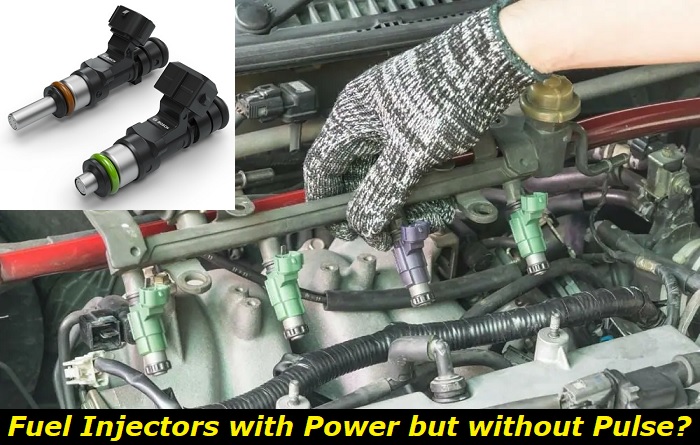No one wants to imagine their car suffering from engine or transmission problems. Most drivers know that the diagnosis and repair process will likely be costly and time-consuming. Fuel injectors are vital for your car's stable and efficient functioning; if they malfunction you will face serious reliability problems. Unfortunately, the problem won't go away on its own.
Injection problems highlights
- Level of importance:High
- Can you drive?Usually, yes
- DIY inspection:Possible but complicated
- DIY repairs:Mostly,impossible
- Price of repair:$350 - $850
- Commonreasons:Clogging, age, electrical problems
- How to fix:Verify electrical connectors, clean the injectors, swap them to see if the codes change

Your Fuel Injector's Job
Before fuel injectors came along, cars relied on carburetors to mechanically mix fuel and air for combustion. Modern fuel injectors were invented to make the combustion process more efficient. Carburetors did the job but could not easily adjust the combustion to different driving conditions.
Your EFI (electronic fuel injection) system does the same job as the ancient carburetors - only much better. It comprises the fuel injector, pump, and rail. The injector relies on readings from different sensors to determine the right amount of fuel necessary for optimal engine performance.
The fuel injector relies on your electronic control unit to analyze the data generated by the various sensors before relaying the exact amount of fuel needed under those unique conditions.
How Your Fuel Injector Operates - What Is an Injector Pulse?
Your fuel injector is an electric valve supplied with pressurized fuel droplets from the pump. When certain pressure levels are achieved, the injector can be closed and opened electromagnetically and at a very high speed. The speed that the injector opens and closes is determined by the electronic control unit using the pulse width modulation (PWM) method.
When your injector receives the electronic control unit's open signal, an electromagnet moves a plunger to allow highly pressurized fuel droplets to pass through a nozzle designed to atomize the fuel for efficient combustion. The pulse width (amount of time the nozzle is open) determines the amount of fuel injected into the combustion chamber.
In summary, the fuel injectors operation includes:
- Receiving a signal from the PWM that prompts it to open the electromagnet and move the piston
- Pressurized fuel is released into the cylinder in droplet form.
- The amount of fuel is determined by pulse width, aka time the injector is open.
Types of EFI Systems
There are three major types of EFI systems in modern automobiles. We will discuss them briefly to help you recognize the lack of an injector pulse in any of them. Single Point Injection (SPI) system has a single injector on your throttle body.
This system was disadvantageous because all the cylinders had to rely on a single injector for refueling, thus causing improper fuel distribution. The single refueling port was based on the older carburetor model, which also faced poor distribution and uneven shape challenges.
In contrast, the multiple Point Injection (MPI) system has separate injectors near each cylinder's intake valve. It relies on the electronic control unit for the exact fuel-air ratio for the cylinder under unique circumstances.
Gasoline Direction Injection (GDI) is the most modern and prevalent EFI. Its injectors are located at each cylinder next to the spark plug to guarantee quick fuel injection into the chamber. This system secures the highest engine performance and causes the least emissions.
Common Causes of Fuel Injectors Having Power But No Pulse
For your fuel injectors to operate optimally, there needs to be an accurate synchronization of the pulse signals from the ECU. Your ECU switches the injectors' ground circuit on (to spray fuel into the intake valve) or off, depending on your engine's needs at that moment.
The ECU determines the right amount of fuel based on the data collected, including the volume of air taken into the engine, RPM, temperature, workload, and exhaust gas composition.
- Malfunctioning Camshaft and Crankshaft Position Sensors
The most important signals the ECU relies on when sending signals to your injectors are the camshaft and crankshaft position sensors. In a few instances, a worn belt may prevent your camshaft and crankshaft position sensors from syncing up, which causes the sensor to send an erroneous signal. Your driver circuit relies on this signal to activate the injectors as ordered. If these sensors fail, your injectors may lack a pulse despite having power.
- Drive Circuit (PCM) Failure
Another likely, yet rare, cause of lack of pulse is a drive circuit failure that causes problems with crankshaft positioning and ignition spark timing. If your car suffers such issues, you are well advised to take it for a professional diagnosis and repair appointment at the dealership. If you are facing an emergency, you can try pressing the gas pedal to the floor when cranking your engine. This may trigger the driver circuit to start the engine despite the challenges present.
When troubleshooting malfunctioning injectors, you need to investigate the voltage or lack thereof on the injector. If your fuel injectors have sufficient power but are not operating as expected, you will need to look into three possible causes:
- A malfunctioning injector fuse
- A defective injector power relay
- A bad wiring harness
Troubleshooting Fuel Injectors That Have Power but No Pulse
When looking to identify the cause of no pulse in your fuel injector, you will need to get under the hood and up close and personal with your engine. If you are not a DIY auto enthusiast or had rather not spend considerable time and effort tinkering with your car, consulting a professional is the easiest path. A certified auto repair shop will perform a thorough diagnosis, identify all problems and perform effective repairs.
- Checking the Injector Fuse
When looking into the problem without professional help, you must locate your injector's fuse and relay. Fuses are integrated into circuits to ensure that the components receiving the power are protected from any surges that may cause a short circuit. If your fuse is blown or malfunctioning, your fuel injector may have no pulse. A blown fuse could cause your engine to stall.
Modern vehicles are fitted with switches, making it very easy for owners to change or break the circuit. When inspecting your fuses, you can either pull out each fuse and inspect it or use a test light to confirm the continuity. If you come across a damaged or blown fuse, you must replace it before trying your engine again.
The good news is that where your fuse is damaged or blown, fixing it is relatively easy. All you need to do is ensure you purchase a high quality preferably OEM replacement that is compatible with your vehicle.
If your new injector fuse suffers a similar fate as the one you replaced, you may be suffering from a damaged wire harness. Some drivers complain about their vehicles running through injector fuses without realizing that their wiring harness must be inspected for damage and repaired before replacing the defective fuse. Wiring harness damage is bound to ruin your fuses if it remains unchecked.
- Checking Your Relay
If your injector fuse operates as expected, you must focus on the relay. You will need to ensure that the relay is getting voltage to your injectors. You can try swapping relays and checking if there is any change. Often injectors malfunction due to internal solenoid short that decrease the resistance.
You will need to check your user manual for the recommended resistor to gauge the result you observe. If you measure one ohm, yet the manual calls for three ohms, your injector is drawing more current than it needs. Excessive current flowing in your injector will likely result in an injector driver circuit failure that will kill all injectors sharing the driver circuit. In such an instance, your engine will not start until you identify the problem.
It is advisable to unplug your injectors one at a go and attempt to crank your engine. If your engine starts with an individual injector unplugged, the injector is shorted and should be replaced with a high-quality compatible alternative. If this process seems too laborious for you, try measuring each injector's resistor. All you need to do is unplug the injector and connect the ohmmeter to the tow terminals. If the resistance is not within the recommended range, replace the injector.
Conclusion
Fuel injector problems call for immediate action. It is not advisable to take on the task yourself. If your car is facing an injector problem, your best option is to entrust your car to the dealership for effective diagnosis and repair.
About the authors
The CarAraC research team is composed of seasoned auto mechanics and automotive industry professionals, including individuals with advanced degrees and certifications in their field. Our team members boast prestigious credentials, reflecting their extensive knowledge and skills. These qualifications include: IMI: Institute of the Motor Industry, ASE-Certified Master Automobile Technicians; Coventry University, Graduate of MA in Automotive Journalism; Politecnico di Torino, Italy, MS Automotive Engineering; Ss. Cyril and Methodius University in Skopje, Mechanical University in Skopje; TOC Automotive College; DHA Suffa University, Department of Mechanical Engineering






Add comment